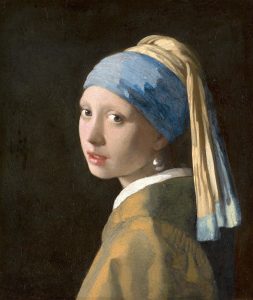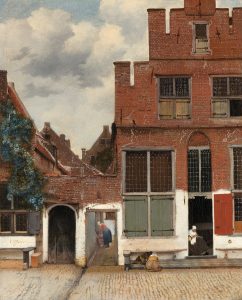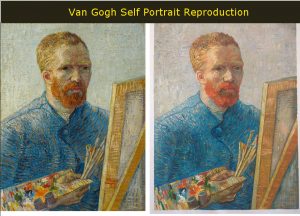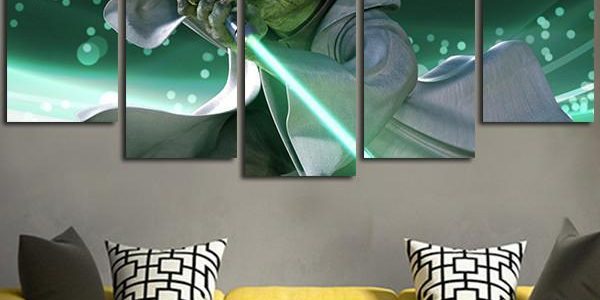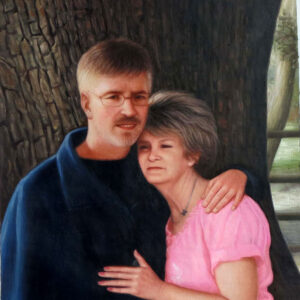Depuis son apparition dans nos vies, la photographie nous fascine et continue de le faire malgre une expression qui, plus souvent qu’autrement, s’inspire de la realite sensible. Les moyens technologiques raffines dont l’artiste fait dorenavant usage ne sont pas parvenus a modifier de facon substantielle la pensee photographique qui, depuis ses debuts, presente des images en noir et blanc mettant simplement en scene des etres ou des objects du reel. Comment cela se fait-il qu’encore aujourd’hui ces photographies nous attirent et nous emeuvent tant? Peut-etre cela est-il du a l’atmosphere feutree et silencieuse de l’image en camaieu, ou bien au jeu d’ombres et de lumieres qui modele les formes ou les adoucit, ou bien aux plages obscures qui forcent l’oeil a s’attarder longtemps au meme endroit? Il ne faut pas non plus exclure la possibilite que nous soyons tout simplement troubles a la vue de fragments de realite depourvus des couleurs qui normalement les caracterisent. Qui sait?
Les natures mortes aux fleurs de Ginette Bouchard, treize photographies de grand format sagement accrochees aux murs de la galerie, comptent parmi ces images qui stimulent la perception, qui prennent le regard en otage et le marquent d’une couche supplementaire d’imaginaire. Bien qu’il s’agisse d’un theme repris par des generations d’artistes et que ce genre nous soit des plus familiers, il semble que cette oeuvre un peu secrete intitulee Floris umbra procure au spectateur une grande satisfaction. Dans Le Regard pensif, Regis Durand s’interroge sur le phenomene de reprise et fait remarquer que <<… la pensee photographique, parce qu’elle concerne au plus pres l’origine, est sans doute vouee plus que tout autre aux reprises constantes>>. A bien y penser, ne sont-ils pas nombreux les photographes qui, a un moment de leur carriere, se sont laisses tenter par la forme inspirante des fleurs? Pensons seulement a Irving Penn et a Mapplethorpe qui, pendant un temps, ont delaisse respectivement l’univers des dechets et celui de la sexualite pour celui des fleurs, vaste bassin de formes complexes et harmonieuses.
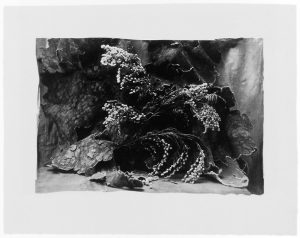
Dans sa serie d’oeuvres photographiques, Bouchard elabore une riche critique historique en superposant des modalites, des techniques, des concepts issus d’epoques differentes. D’abord, comme nous l’avons deja mentionne, elle revisite les enjeux photographiques par le biais de la nature morte, genre prise depuis des siecles par les peintres et, subsequemment, par les photographes. De plus, si d’une part, les teintes de gris subtilement brunis evoquent les photographies du XIXe siecle, d’autre part, les traces de pinceaux situees aux frontieres de l’image renvoient directement a la peinture. Le procede d’impression seculaire qu’elle utilise, le platine palladium, demande que l’artiste applique ellememe l’emulsion sur le papier pour obtenir une image legerement voilee. Dans sa reflexion, Bouchard remet aussi en cause la question du realisme photographique en retouchant ses negatifs, en modifiant la realite et ce, au moyen d’outils informatiques de pointe. Mais ces manipulations demeurent souvent imperceptibles aux yeux du regardant non averti.
Curieusement, en voyant ces photographies enfermees dans des cadres profonds au chassis de bois, j’ai pense aux papillons qu’on voit parfois epingles dans des vitrines. Mais, plus specifiquement, j’ai associe ces contenants aux cabinets de curiosite – version tridimensionnelle des natures mortes – dans lesquels on disposait des collections d’objects naturels ou techniques a des fins scientifiques. Ces grandes feuilles de papier aux bords franges sur lesquelles sont imprimees les images se detachaient legerement du fond en y projetant une ombre. Et chaque photographie, titree en latin, numerotee en romains a la mine de plomb, rappelle d’autant plus les inscriptions savantes utilisees pour identifier les objects de collection minutieusement fiches et catalogues.
Le discours de Floris umbra est donc solidement ancre dans une problematique historiciste. Mais, au fur et a mesure que l’oeil penetre l’espace photographique constitue de fleurs fraiches ou sechees, de tiges bourgeonnantes et de feuilles plissees, il se laisse porter a travers des enchevetrements vegetaux parfois desordonnes qui, au bout du compte, revelent la presence de fleurs qui n’en sont pas, des simulacres de fleurs. Des ombres de papier, de plastique, de porcelaine, voilees, minutieusement arrangees ou oubliees dans un coin. Il est difficile de situer exactement ces objets. On les voit posees sur le sol dans une encoignure ou les surfaces parlent de pierre et de beton, de soleil lointain et d’ombres revelatrices. Ou encore, on les imagine deposees en offrande sur la tombe d’un inconnu, ou trouvees au fond d’un jardin ombrage, derriere une remise ou sur le bord d’une vieille fenetre.
D’autres compositions, en apparence plus sages, montrent une plus grande affinite avec l’esthetique des interieurs neo-classiques. Pour un instant, on se croirait transporte dans de vastes salons vides aux tissus soyeux, aux boiseries vernies, aux lustres de cristal, aux plateaux d’argent. Cependant, le raffinement que suggerent ces arrangements floraux n’est encore qu’un simulacre. Presentes sur des fonds confus, indefinis, obscurs, ils existent nulle part, dans des bors-lieux. Des lors, l’esthetique de Floris umbra m’apparait sans age, millenaire, propre aux creations des membres de notre espece qui, de tout temps, se sont plu a reinventer le monde.
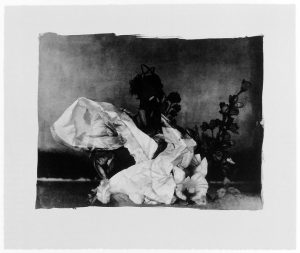
Mais, encore, comment expliquer l’engouement persistant pour cet art qui donne a voir les choses du reel? Ne peut-on pas supposer que ce qui nous seduit ne concerne en rien la realite de l’objet represente? Car souvent, ce quelque chose qui nous affecte, nous echappe, n’a rien a voir, comme Durand le souligne, avec le temps de la chose photographiee, avec <<son avoir ete la>>. D’aucuns relient cette sensation de vide et de plein a la mort, a l’absence, la situent dans l’ailleurs, dans le bors-champ. Mais ce quelque chose se doit d’etre present, perceptible dans ces images qui nous plaisent. Quelque chose qui est a la fois <<insistant et leger>>, comme l’ajoute Durand dans sa recherche du signifiant volatil.
Et si ce qui est la et qui ne peut pas se voir, ce qui nous file entre les yeux, avait un lien avec tout ce que l’ombre deguise, voile, met a l’abri des regards? Qu’elle soit dense ou legere, cette ombre troublerait-elle le desir et l’empressement de l’oeil a reconnaitre la forme qui, malgre l’insistance des yeux, demeurera muette? Et, malgre ce silence, l’oeil continuera obstinement a fouiller l’obscurite. Cet etat de fait provoquerait-il un malaise chez le sujet?
Selon Tanizaki Junichiro, litteraire japonais de la premiere moitie du siecle, la personne qui a peu cotoye l’univers des tenebres n’a pas eu l’occasion de <<percer l’enigme de l’ombre>> (Eloge de l’ombre, 1995). Les Japonais, explique-t-il, ont ete amenes par la force des choses a vivre dans des environnements sombres, ce qui leur a permis de penetrer <<les mysteres de l’ombre>>. D’ailleurs, toute l’apologie de l’ombre de Junichiro montre que <<le beau n’est pas une substance en soi, mais rien qu’un dessin d’ombres>> et que, sans ombre, le beau s’evanouit. Troublant. Doit-on faire notre ce principe esthetique qui puise son origine dans une realite etrangere? L’on retorquera que ce qui est vrai pour le Japonais ne l’est pas necessairement pour nous. Et pourtant, l’idee qu’une esthetique puisse reposer sur l’ombre et la lumiere suscite des interrogations.
Serait-ce le <<beau>> que l’on pressent dans ces images photographiques (elles-memes nees de l’ombre), beau qui nous echappe et qui nous incite a la reverie? Durand, dans une autre tentative de demasquer cette chose a la fois presente et absente de l’espace photographique, l’associe a un lieu <<ou le repertoire des formes se constitue, se defait, et se reconstitue sans cesse>>, comme si l’objet ouvrait la porte donnant sur la <<source>> de l’image dont la mouvance stimulerait le reveur.
Des ombres de fleurs baignees d’obscurite hantent les espaces pluriels de Bouchard. Des reflets profonds, un peu voiles ainsi qu’une lueur diffuse ne parviennent pas a s’immiscer dans tous les replis ou l’ombre s’est retranchee pour se faire la gardienne des lieux. Les fonds textures, les marques du temps sur la matiere ajoutent aux figures insondables, pressenties dans l’univers de Floris umbra. Murs noircis voire taches, surfaces decrepites ou patinees, sols jonches de residus vegetaux ou mineraux, rides douces ou profondes assombrissent ca et la l’espace photographique. Au creux des moindres interstices que le temps a menages dans le bois, la pierre, le papier ou la fleur petrifiee, l’ombre se blottit et s’amuse a susciter chez le regardant des resonnances troublantes.
